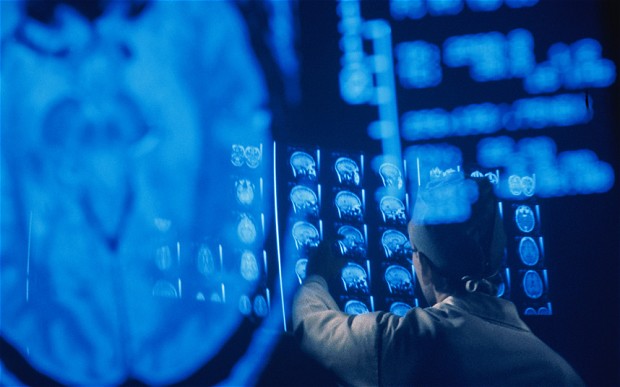Scientists at Oxford University have discovered that an MRI scan can pick up the very earliest signs of Parkinson’s disease, giving hope that it could be treated before the symptoms start

A brain-scanning technique that detects early signs of Parkinson’s holds out the hope of tackling the disease before it starts to cause symptoms.
Researchers identified patients with early-stage Parkinson’s disease with 85% accuracy using a special type of magnetic resonance imaging (MRI) scan.
Conventional MRI scans cannot detect early Parkinson’s. The new approach, known as resting state fMRI, involves measuring the connectivity of neurons in the basal ganglia region of the brain.
Lead scientist Dr Clare Mackay, from the department of psychiatry at Oxford University, said: ”At the moment we have no way to predict who is at risk of Parkinson’s disease in the vast majority of cases.
”We are excited that this MRI technique might prove to be a good marker for the earliest signs of Parkinson’s. The results are very promising.”
[ads1]
Around 127,000 people in the UK are believed to have Parkinson’s, an incurable neurodegenerative disease that causes tremors, slow movements and muscle rigidity.
The progressive nerve cell damage produced by the condition is thought to begin long before symptoms appear.
Treatments that slow or halt the disease prior to it taking hold require better ways of identifying those affected.
The new diagnostic scan could make developing such drugs worthwhile, according to the researchers.
The scientists compared 19 people with early-stage Parkinson’s and the same number of healthy volunteers.
Their results, published in the journal Neurology, showed that Parkinson’s patients had much lower levels of basal ganglia connectivity.
They were able to establish a connectivity cut-off point below which every participant tested had Parkinson’s.
The scan also had a ”specificity” of 89.5%, meaning only a few healthy people were wrongly diagnosed.
”Our MRI approach showed a very strong difference in connectivity between those who had Parkinson’s disease and those that did not,” said Dr Mackay. ”So much so, that we wondered if it was too good to be true and carried out a validation test in a second group of patients. We got a similar result the second time.”
In the validation test, the scan correctly identified 11 out of 13 patients with early-stage Parkinson’s.
Co-author Dr Michele Hu, from Oxford University’s Nuffield Department of Clinical Neurosciences, said: ”We think that our MRI test will be relevant for diagnosis of Parkinson’s.
”We tested it in people with early-stage Parkinson’s. But because it is so sensitive in these patients, we hope it will be able to predict who is at risk of disease before any symptoms have developed. However, this is something that we still have to show in further research.”
Risk factors for Parkinson’s include advancing age, being male, having one or more close relatives with the disease, exposure to certain agricultural chemicals, an over-active version of the alpha-synuclein gene, and blows to the head.
Clare Bale, from the charity Parkinson’s UK which funded the research, said: ”This new research takes us one step closer to diagnosing Parkinson’s at a much earlier stage – one of the biggest challenges facing research into the condition.
”By using a new, simple scanning technique the team at Oxford University have been able to study levels of activity in the brain which may suggest that Parkinson’s is present. One person every hour is diagnosed with Parkinson’s in the UK, and we hope that the researchers are able to continue to refine their test so that it can one day be part of clinical practice.”
Leave a Reply